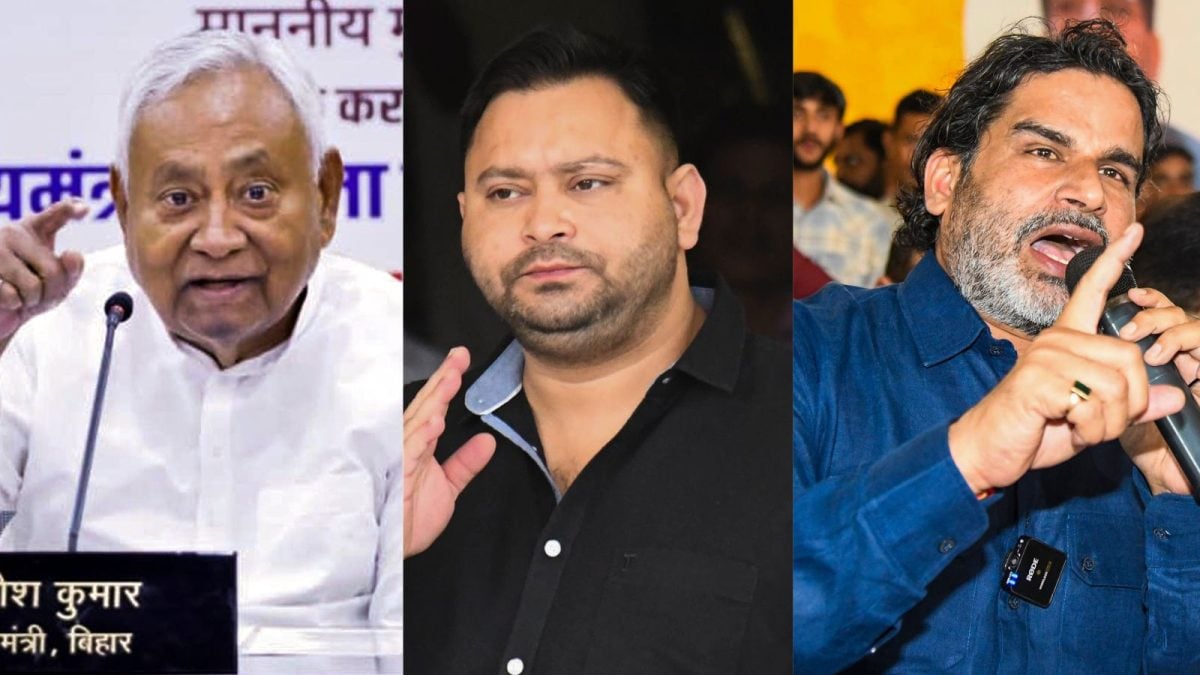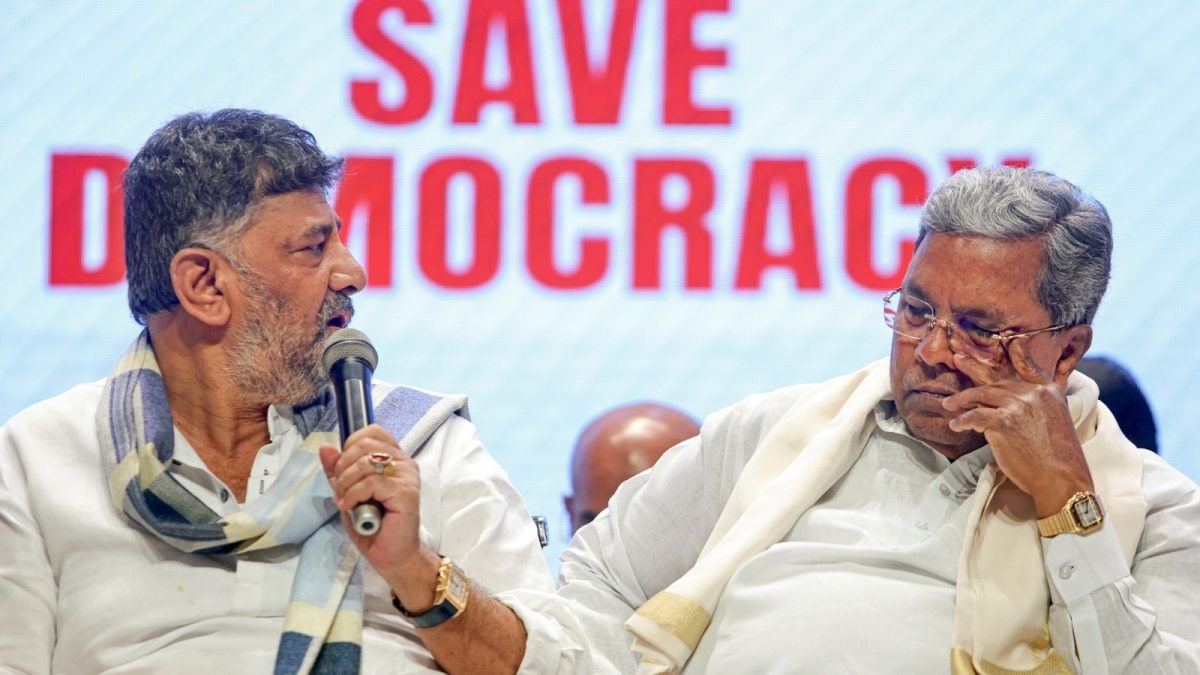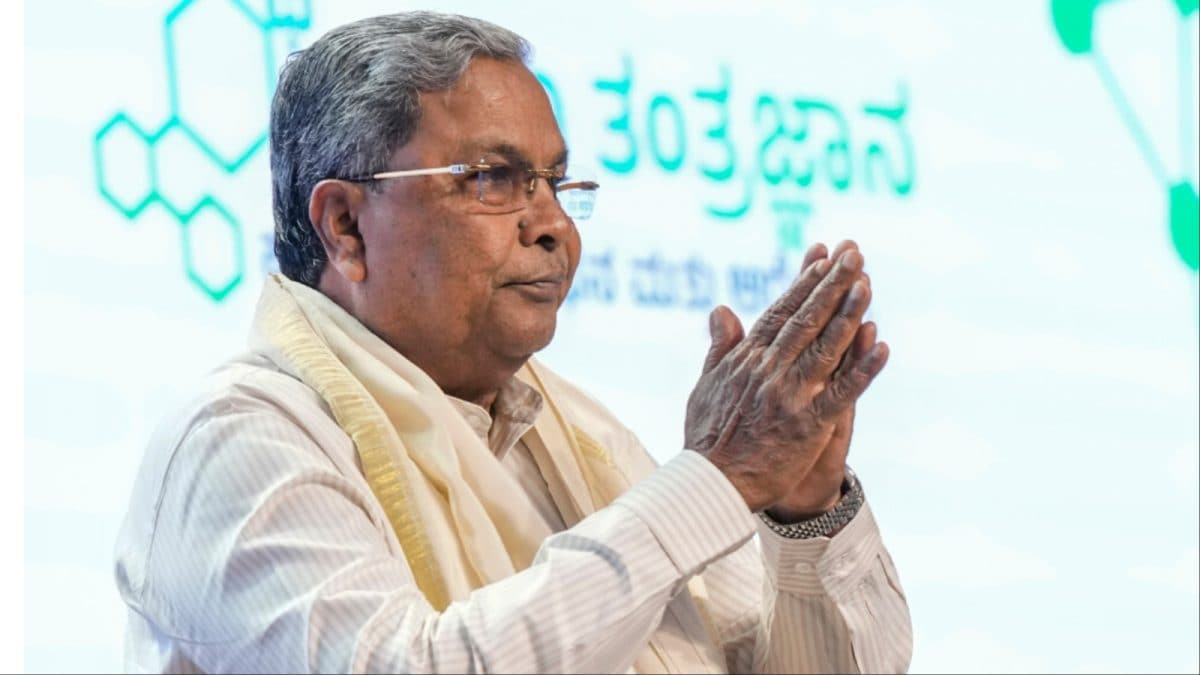Last Updated:
Kishor has decided not to contest the Bihar polls even though he had initially indicated that Tejashwi Yadav’s Raghopur would be his debut electoral ground.

Bihar CM Nitish Kumar, RJD leader Tejashwi Yadav, and Jan Suraaj Party leader Prashant Kishor (File)
It was billed as the “mother of all contests” in Bihar. Prashant Kishor’s entry was hyped as the third factor that could shake up the state’s caste-based politics in favor of a new, development-focused narrative. But Kishor has decided not to contest the Bihar polls, announcing his decision in an interview with PTI.
Kishor had initially indicated that Tejashwi Yadav’s Raghopur would be his debut electoral ground. On 11th October, he launched the Jan Suraj Party’s poll campaign from Raghopur, fueling further speculation.
Instead, Chanchal Singh, a 37-year-old hotelier, has been given the party symbol by Jan Suraj Party. Singh, previously associated with Janata Dal (United), is the Vice President of JSP’s Youth Wing.
This decision has impacted perceptions of Jan Suraj as a serious “third factor” in the bipolar contest between the NDA and the Mahagathbandhan (MGB). Kishor, however, has kept the stakes high, insisting that anything less than 150 seats would be considered a defeat for his party — a target comparable to Amit Shah’s 160-seat goal for the BJP, according to insiders.
Yet, the political strategist-turned-politician’s decision to avoid a direct contest with the RJD’s Chief Ministerial face is being seen as Jan Suraj failing to live up to the pre-poll hype. The BJP, which had once hired Kishor as a strategist, now points to his negligible electoral impact on the ground. The Mahagathbandhan also claims that the hype is largely confined to social media and Delhi studios.
The reality will only be revealed on November 14, when the EVMs are counted. Even so, Kishor’s strategy of giving tickets to a cross-section of candidates across caste, religion, and age has already sparked conversations in Patna, Darbhanga, Bhagalpur, and Gaya. With over 4,500 Jan Sabhas, he introduced a unique political style, focusing on development and growth rather than religion or caste, as many had predicted.
SIR: Not a Factor
The Special Intensive Revision (SIR) of the voter list, initially seen as a potential game-changer, has now become a non-factor. Fears that lakhs of people, particularly minorities, would be disenfranchised have proved misplaced. There have been no mass protests on the ground by the 69 lakh people whose names were excluded from the final list. The Election Commission has not shared data on how many of those excluded were illegal immigrants, and district-level data do not suggest any large-scale flagging of minorities as suspected Bangladeshis or Rohingyas.
The opposition’s SIR narrative has therefore failed to resonate with voters. Even the initial euphoria among local Congress cadres over Rahul Gandhi’s Vote Adhikar Yatra has now tempered. Concerns like “Vote Chori” have not triggered significant voter anger, as Biharis are increasingly prioritising accountability and ease of living over polarising narratives.
The M Factor
Amid these developments, the emerging X factor in the Bihar polls appears to be the “M” for Mahila factor. With 3.5 crore female electors — just about 40 lakh fewer than their male counterparts — women could play a decisive role in choosing Bihar’s next CM. Most of these women have consistently supported Nitish Kumar in past elections.
This time, the Mukhayamantri Mahila Rozgar Yojna, aimed at promoting women’s economic independence, is expected to play a key role. This differs from Tejashwi Yadav’s promise of a monthly dole of Rs 2,500 to poor and backward women. Schemes focused on women’s economic empowerment — such as Ladli Behna in Madhya Pradesh, Ladki Bahini in Maharashtra, and Mayiya Samman in Jharkhand — have historically benefited political parties. In Bihar, the mind of the Mahila voter could ultimately emerge as the decisive X factor.

Arunima is Editor (Home Affairs) and covers strategic, security and political affairs. From the Ukraine-Russia War to the India-China stand-off in Ladakh to India-Pak clashes, she has reported from ground zero …Read More
Arunima is Editor (Home Affairs) and covers strategic, security and political affairs. From the Ukraine-Russia War to the India-China stand-off in Ladakh to India-Pak clashes, she has reported from ground zero … Read More
October 16, 2025, 07:41 IST
Read More








